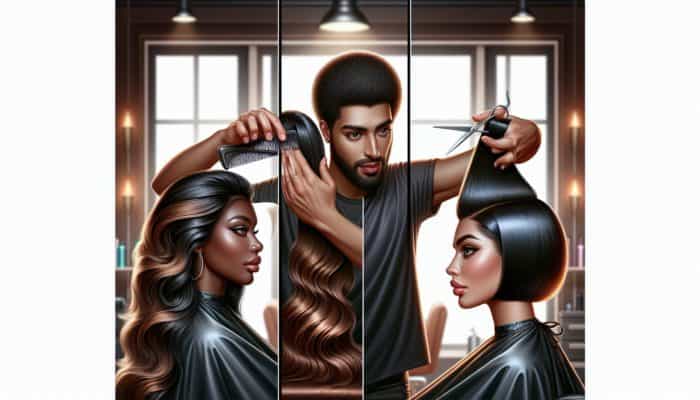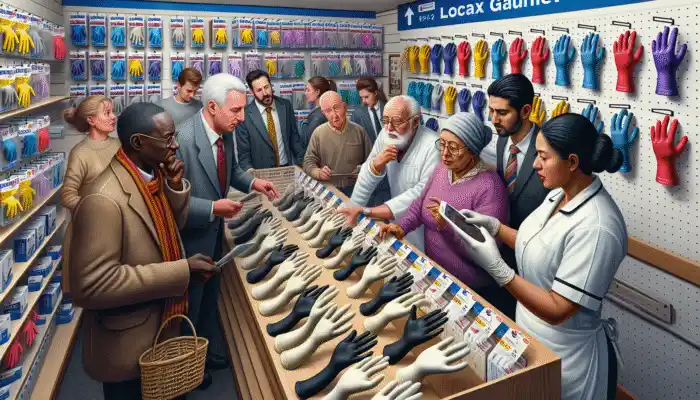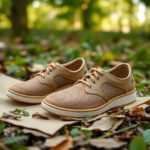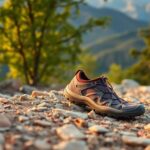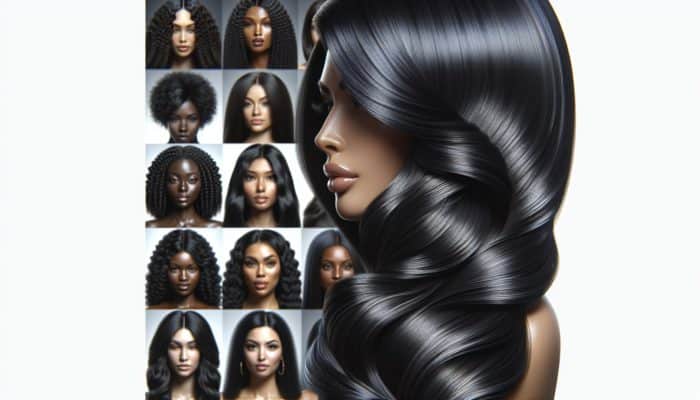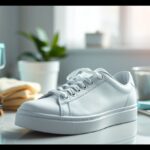By implementing effective maintenance techniques, your barefoot shoes can experience a significantly longer lifespan while retaining their flexibility and comfort. To keep them in optimal condition, it is essential to gently clean them with a mixture of mild soap and water, steering clear of harsh chemicals that could potentially damage the materials. Always allow your shoes to air-dry naturally, avoiding direct heat sources that may warp the soles and alter their shape. Regularly inspecting for signs of wear, particularly on the thin soles, is crucial to prevent potential injuries from unnoticed damage. By following these care practices, you will ensure your shoes remain supportive and hygienic for every step of your journey.
Essential Maintenance Techniques to Maximize the Lifespan of Your Barefoot Shoes
To ensure the ongoing performance of your barefoot shoes, prioritizing proper care routines is crucial. Regular maintenance not only prevents premature wear and tear but also helps in preserving their flexibility while ensuring the materials remain breathable and durable. By integrating simple cleaning and storage practices into your routine, you can greatly enhance the lifespan of your footwear, ultimately saving money and ensuring your feet stay comfortable for extended periods.
The Critical Role of Regular Cleaning in Extending Shoe Lifespan
Your barefoot shoes naturally accumulate dirt, sweat, and debris over time, which may lead to material degradation if left unchecked. Gentle cleaning is vital to effectively remove these contaminants, preventing unpleasant odors and helping to maintain the shoe’s natural shape. This cleaning routine not only keeps your shoes looking pristine but also allows you to identify early signs of damage, facilitating timely repairs before they escalate into more serious issues.
How Proper Storage Can Significantly Enhance Shoe Longevity
While regular cleaning is essential, proper storage practices are equally important. Ensure that your shoes are kept in a cool, dry environment, away from direct sunlight, as prolonged exposure can result in fading, cracking, or warping of materials. Utilizing a shoe tree or stuffing the shoes with paper will aid in maintaining their shape and preventing unsightly creasing.
In fact, improper storage methods can lead to mold growth or material degradation, especially if the shoes are damp. Ensuring that your shoes are completely dry before storing them and avoiding tight spaces will protect the integrity of the lightweight, flexible design that makes barefoot shoes so unique and functional.
Identifying the Effects of Wear and Tear Over Time
As time passes, even the highest quality barefoot shoes will inevitably show signs of wear. However, neglecting proper care can accelerate this wear, resulting in thinning soles and compromised support. By rotating between various pairs, you can alleviate constant stress on a single pair, allowing the materials to recover adequately between wears.
Consequently, overlooking minor issues such as loose stitching or worn treads can lead to irreparable damage or discomfort. Promptly addressing small repairs will ensure your shoes remain safe and functional, thus protecting your feet and maximizing their longevity for all your activities.
Detailed Step-by-Step Guide for Cleaning Your Barefoot Shoes
Some styles of barefoot shoes require gentle care to uphold their shape and durability. Follow this straightforward guide to keep them fresh and long-lasting:
| Step 1 | Begin by removing loose dirt with a soft brush or damp cloth. |
| Step 2 | Utilize mild soap combined with lukewarm water for a complete hand-washing. |
| Step 3 | Rinse thoroughly to eliminate any soap residue that could remain. |
| Step 4 | Allow the shoes to air-dry away from direct heat sources to prevent damage. |
Key Cleaning Supplies for Effective Shoe Maintenance
At a minimum, you will need a soft-bristle brush, mild soap, and lukewarm water. Steer clear of harsh chemicals or abrasive tools, as these can degrade the materials of your barefoot shoes and negatively impact their longevity and performance.
Hand-Washing Techniques for Optimal Shoe Care
When hand-washing, always immerse your shoes in lukewarm water mixed with a small amount of mild soap. Gently scrub the shoes with a soft brush or cloth, paying particular attention to any stained areas. Never use hot water, as it can warp the shoe’s structure and ruin its fit, compromising comfort and effectiveness.
Different materials may require varied techniques; for instance, leather shoes benefit from a conditioner after washing, while synthetic fabrics generally dry more quickly. Always consult the manufacturer’s guidelines to avoid potential damage to your barefoot shoes and ensure the best care practices are followed.
Effective Drying and Deodorizing Methods for Your Footwear
Deodorizing your barefoot shoes is a straightforward yet essential step for maintaining freshness. Stuff them with cedar shoe trees or newspaper to absorb moisture and neutralize odors effectively. Avoid direct sunlight or heat sources, as these can lead to cracking or shrinking of the materials over time.
For long-term care, sprinkle baking soda inside your shoes overnight to help neutralize odors. For particularly stubborn smells, consider using a natural deodorizing spray specifically designed for footwear. Always confirm that your shoes are completely dry before wearing them again to prevent any discomfort.
Tailored Care Tips for Different Barefoot Shoe Models
Recognizing that not all barefoot shoes are identical, it is crucial to customize your care routine according to the specific model. For mesh uppers, avoid aggressive scrubbing techniques. With sandals, prioritize hygiene for the straps. For leather models, use appropriate conditioners to maintain their quality and appearance. Gentle handling will significantly extend their lifespan and functionality.
Cleaning Methods for Mesh Uppers (e.g., HFS)
When caring for mesh uppers, utilize a soft brush combined with mild soap to effectively remove dirt. Rinse with lukewarm water and allow them to air-dry away from direct heat. Avoid machine washing, as this can compromise the integrity of the fabric and lead to potential damage.
Care Guidelines for Sandals (e.g., Z-Trail EV)
For sandals, gently wipe down the straps with a damp cloth and mild soap. Pay close attention to footbed grooves where debris tends to accumulate, ensuring thorough cleaning. Never soak them in water, as this can weaken the adhesives used in the construction and lead to premature wear.
Moreover, sandals like the Z-Trail EV benefit from occasional strap adjustments to prevent uneven wear. Always check buckles for signs of corrosion, especially if they have been exposed to saltwater, to maintain their functionality.
Maintenance Tips for Leather Models (e.g., PRIO)
Above all, leather barefoot shoes require regular conditioning to keep them supple and prevent drying out. Every few months, use a natural leather conditioner to maintain their quality and appearance. Applying a waterproofing spray adds an extra layer of protection against stains and moisture.
A well-cared-for leather model will develop a rich patina over time, enhancing its aesthetic appeal while ensuring durability. To maintain their shape and absorb any moisture, store them with cedar shoe trees. Always avoid exposing them to excessive heat, as this can cause the leather to crack and diminish its integrity.
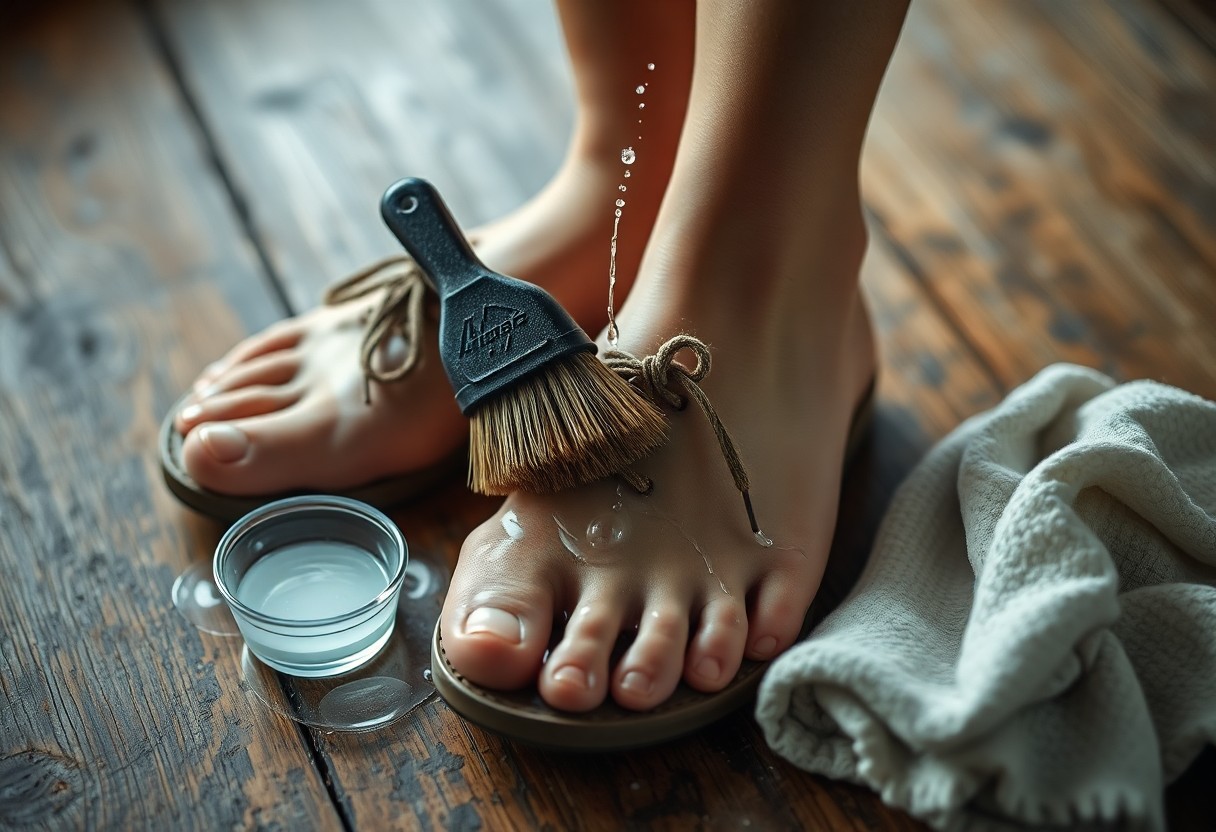
Proactive Strategies for Preventing Odor Buildup in Your Shoes
After each wear, it’s vital to air out your barefoot shoes immediately to inhibit the growth of bacteria that cause unpleasant odors. Rotating between multiple pairs allows each to dry completely, and avoiding damp storage areas is crucial for maintaining freshness. Sweat and moisture are primary contributors to odor, so addressing these issues early will help keep your shoes smelling pleasant and clean.
The Importance of Moisture Control in Footwear Maintenance
Effective moisture control is essential—damp environments promote bacteria growth, which creates foul odors. Consider utilizing moisture-wicking socks and avoid wearing your shoes in wet conditions whenever possible. If your shoes do become wet, stuff them with newspaper to absorb excess moisture and speed up the drying process, ensuring they remain comfortable for your next use.
Utilizing Foot Powder or Sprays for Extra Protection
At times, your feet might require additional protection. Lightly apply natural foot powder or antibacterial sprays before putting on your shoes to mitigate sweat and reduce the proliferation of odor-causing microbes, thus enhancing comfort.
Opt for products containing activated charcoal or baking soda, which effectively neutralize odors without the use of harsh chemicals. Reapply as needed, particularly after engaging in intense activities or during humid conditions, to keep your shoes and feet fresh.
Ensuring Proper Airflow When Storing Your Shoes
In addition to daily airing, store your barefoot shoes in a well-ventilated area to promote airflow. Avoid sealed containers or plastic bags, as these trap moisture and encourage bacterial growth, leading to unpleasant odors.
To enhance airflow, consider using a shoe rack or mesh storage bag. While direct sunlight can help disinfect and dry your shoes, prolonged exposure should be avoided to prevent material damage and fading of colors.
Seasonal Care Strategies to Maintain Your Barefoot Shoes
Unlike conventional footwear, barefoot shoes require tailored care suited to each season to preserve their flexibility and durability. Adjusting your maintenance routine ensures comfort and functionality throughout the year, whether you’re facing summer heat or winter slush.
Summer Care: Managing Heat and Moisture
To keep your barefoot shoes fresh during summer, focus on effective moisture control. Excessive sweat can lead to odors and material breakdown, so it’s essential to manage these factors. Rotating pairs allows each to dry adequately, while using moisture-wicking socks and spot-cleaning with mild soap helps maintain their condition. Avoid direct sunlight during drying to prevent cracking and preserve the materials.
Winter Care: Protecting Against Snow and Salt Damage
One of the main threats to your barefoot shoes in winter is road salt, which can corrode materials and lead to long-term damage. After exposure, wipe them down and apply a water-repellent spray to protect against moisture. If you frequently encounter snow, consider choosing insulated or water-resistant models for added protection.
Care goes beyond surface cleaning; salt stains can seep into seams, causing significant long-term damage. Use a vinegar-water mixture for stubborn residue, and ensure you store shoes in a dry place to prevent mold growth. Neglecting this can significantly shorten their lifespan and effectiveness.
Spring and Fall Maintenance Routines for Optimal Care
A proactive routine during transition seasons can prevent dirt and grime buildup. Deep-clean your barefoot shoes using a gentle brush and a pH-neutral cleaner to maintain their appearance. Carefully inspect the soles for signs of wear and reapply protective treatments as necessary to extend their lifespan.
Even minor debris can abrade materials over time, so pay attention to crevices where mud can accumulate. Ensure that shoes air-dry thoroughly before storage. Regular maintenance will keep your shoes prepared for any adventure, ensuring they remain comfortable and supportive.
Repairing Minor Damages to Prolong the Longevity of Your Shoes
Not all wear and tear signifies the end of your barefoot shoes. Minor issues such as scuffs, loose laces, or separated soles can often be remedied at home, extending the life of your footwear. Addressing these small problems early can prevent further damage and ensure your shoes remain comfortable and functional for your needs.
Effective Techniques for Fixing Scuffs and Scratches
Damages like scuffs or scratches on your barefoot shoes can often be buffed out using a soft cloth and a small amount of leather conditioner or a mild soap solution. For deeper marks, you may need to use a specialized shoe cleaner designed specifically for the materials of your shoes, ensuring that you restore their appearance without compromising their flexibility or integrity.
Replacing Worn Laces and Insoles for Enhanced Comfort
Scuffs aren’t the only issue—worn laces or insoles can drastically affect fit and comfort. Consider replacing them with high-quality alternatives to maintain proper support and breathability. Opt for laces made from durable materials such as polyester or hemp to ensure longevity and resilience over time.
If your insoles show signs of wear, replace them if they become frayed or lose their shape, as this can impact foot health significantly. Choose minimalist insoles that align with your shoe’s thin and flexible design to preserve the intended barefoot feel and enhance overall comfort.
Repairing Separated Soles with Strong Adhesives
Using a strong, flexible adhesive like shoe glue, you can reattach separated soles on your barefoot shoes. Start by cleaning the area thoroughly, applying glue evenly, and clamping the parts together for a secure bond. Be careful not to over-apply glue, as this can lead to stiffness in the shoe and compromise its functionality.
It’s imperative to allow the glue to cure fully—typically around 24 hours—before wearing the shoes again. Afterward, gently test the bond to ensure it holds effectively. Warning: Using the wrong type of adhesive can damage the materials or create an unsafe walking surface, so choose wisely.
Best Practices for Storing Your Barefoot Shoes
Proper storage is critical for extending the lifespan of your barefoot shoes. Store them in a cool, dry location away from direct sunlight to prevent material degradation and fading. Avoid stacking heavy items on top of your shoes, as this can deform their flexible soles and affect their comfort and usability. Utilize a breathable storage bag or box to shield them from dust while allowing for air circulation.
Optimal Practices for Long-Term Shoe Storage
For long-term care, stuff your barefoot shoes with acid-free tissue paper to help maintain their shape. Store them upright or lay them flat—never hang them, as this can strain the structure and lead to deformation. If a pair is unused for months, rotate between pairs to prevent sole hardening and ensure consistent support.
Avoiding Common Mistakes in Shoe Storage
Above all, it’s crucial to avoid leaving your barefoot shoes in damp or humid environments, as this can lead to mold growth that ruins them and creates unpleasant odors. Refrain from using plastic bags, which can trap moisture and result in a breeding ground for bacteria. Keep your shoes away from heat sources like radiators to avoid cracking and material breakdown.
Storing shoes in cramped spaces can crush their natural shape, reducing overall comfort and support. Over time, this may weaken seams or damage minimalist designs. Always prioritize airflow to protect materials such as leather or mesh, ensuring that your shoes remain in excellent condition.
Selecting the Right Storage Environment for Your Shoes
In the long term, choose storage areas with stable temperatures and low humidity levels, such as a well-ventilated closet. Avoid basements and attics, as these spaces can experience temperature fluctuations and attract pests, which can damage your shoes. A shoe rack in a climate-controlled room is the ideal solution for maintaining the integrity of your footwear.
To enhance protection, consider placing silica gel packs in storage containers to absorb excess moisture. Direct sunlight may fade colors and weaken adhesives, so opt for shaded areas for storage to protect your shoes from unnecessary damage.
The Essential Role of Insoles in Maintaining Comfort and Care
For the optimal care and comfort of your barefoot shoes, insoles play a crucial role. They provide arch support, absorb shock during movement, and enhance breathability, ensuring your feet remain comfortable throughout the day. Well-maintained insoles also contribute to the longevity of your shoes by minimizing wear on the interior lining and supporting the overall structure.
Selecting the Ideal Insole for Maximum Benefits
To maximize the benefits from your barefoot shoes, choosing the right insole is essential. Look for materials like cork or memory foam that adapt to your foot shape while still maintaining flexibility. A well-selected insole can significantly improve posture and prevent discomfort, making it a worthwhile investment for long-term foot health and comfort.
Essential Tips for Regular Cleaning and Replacement of Insoles
Keep your insoles fresh between wears by following these straightforward steps:
- Hand-wash them carefully using mild soap and lukewarm water to remove accumulated debris.
- Air-dry them completely before reinserting them into your shoes to prevent moisture buildup.
- Replace insoles every 6-12 months based on usage and visible wear to maintain optimal comfort.
This routine helps prevent odor buildup and maintains overall hygiene, ensuring your shoes remain comfortable and supportive during use.
For deeper maintenance, consider rotating multiple insoles to prolong their lifespan and effectiveness. Using a baking soda paste can effectively eliminate stubborn odors, and avoid direct heat when drying to ensure your barefoot shoes remain fresh and functional.
Custom Insoles Versus Standard Insoles for Enhanced Comfort
With custom insoles, you can enjoy tailored support for unique foot shapes or conditions such as plantar fasciitis. While standard insoles provide general comfort, they may lack the precise benefits of custom options. Weighing the cost against the benefits helps you determine which type meets your needs effectively and provides the best support.
Custom insoles are particularly beneficial for individuals with chronic pain or uneven pressure distribution, while standard options work well for everyday use. Avoid cheap materials that degrade quickly, as they can compromise both comfort and durability over time, leading to potential foot issues.
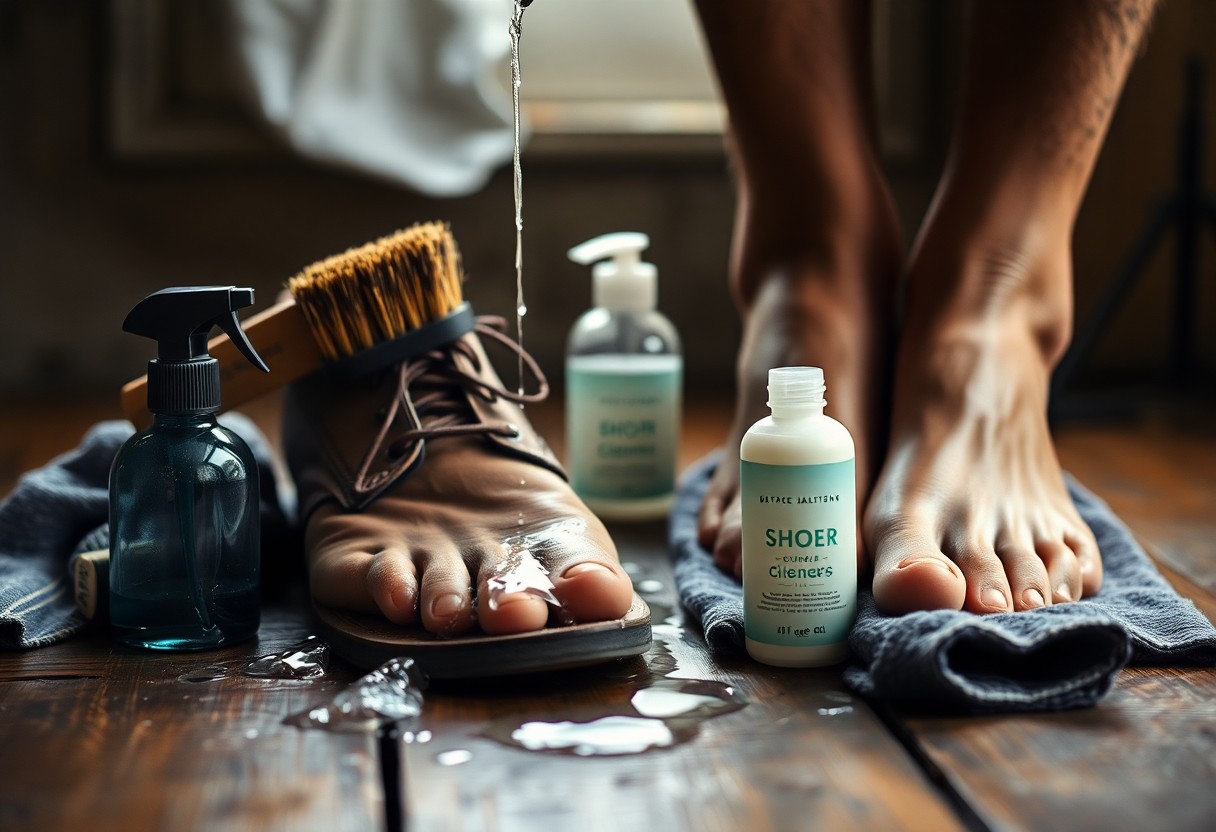
Recognizing the Environmental Impact and Sustainable Practices in Shoe Care
With mindful care, your barefoot shoes can last longer, reducing waste and promoting sustainability. Embracing eco-friendly practices minimizes your environmental footprint while preserving the natural flexibility and durability of your footwear. From cleaning methods to disposal, every action counts in fostering a more sustainable approach to shoe maintenance and care.
Choosing Eco-Friendly Cleaning Products for Sustainable Care
A highly effective way to sustainably care for your barefoot shoes is by selecting plant-based or biodegradable cleaners. These products avoid harsh chemicals that can harm the environment and degrade materials over time. Look for certifications like USDA Organic or EcoCert to ensure your choices align with environmentally responsible practices and contribute positively to sustainability.
Repairing Versus Replacing: Sustainable Footwear Considerations
When faced with minor wear or significant damage, repairing your barefoot shoes often proves more sustainable than purchasing new ones. Simple fixes like re-gluing soles or stitching tears can extend their lifespan, significantly reducing landfill waste and conserving valuable resources.
Choosing to repair reinforces circular fashion principles, but if the damage is beyond repair, consider upcycling or donating. Always weigh the environmental cost of replacing your shoes against the effort and resources required for restoration, as sustainable choices contribute to a healthier planet.
Recycling Your Old Barefoot Shoes Responsibly
Barefoot shoes made from natural materials such as leather or hemp can often be recycled or composted. Consult with specialized recycling programs or brands that offer take-back initiatives to ensure responsible disposal and reduce environmental impact.
Cleaning your shoes thoroughly before recycling eliminates contaminants, simplifying the process. For shoes made of synthetic materials,


